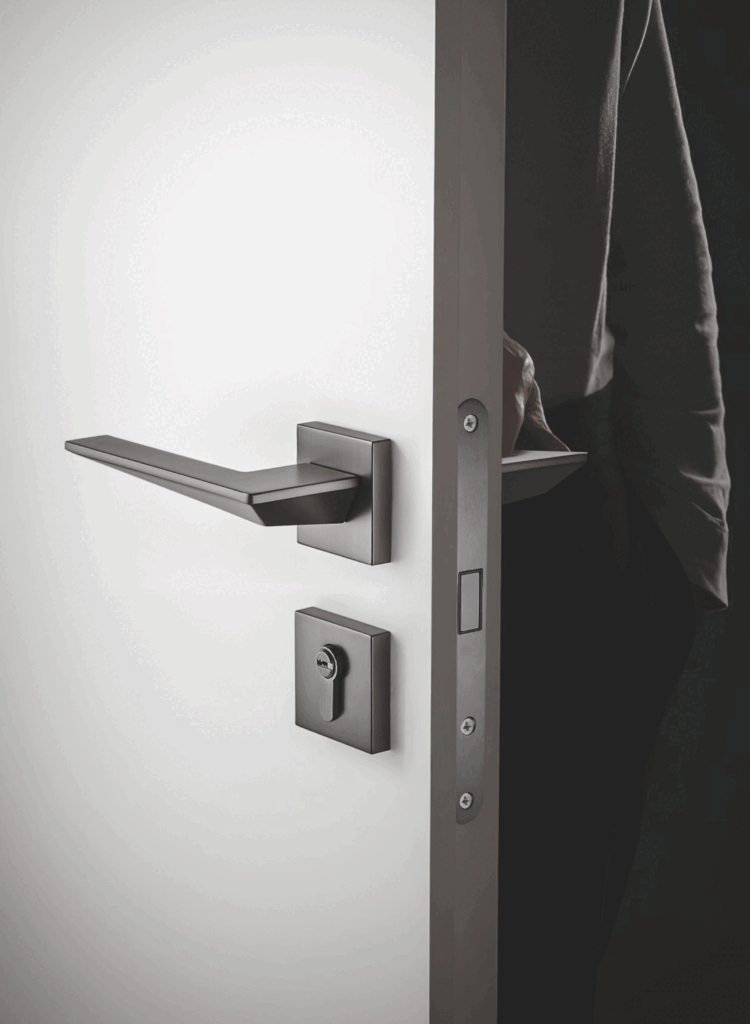summary
The industry standards for door locks in the United States are governed primarily by the American National Standards Institute (ANSI) and the Builders Hardware Manufacturers Association (BHMA). These standards are crucial for ensuring the quality, security, and reliability of locking mechanisms used in both residential and commercial applications. They establish performance benchmarks, categorizing locks into three grades—Grade 1, Grade 2, and Grade 3—based on their durability and security capabilities. Compliance with these standards not only promotes consumer confidence but is often a requirement in building codes and safety regulations across the country.
Notably, the evolution of door locks has progressed significantly over the years, transitioning from traditional mechanical designs to advanced electronic and smart locking systems. The integration of technologies such as biometric recognition and mobile access has transformed how locks operate, enhancing both convenience and security for users. However, this shift has also raised concerns about cybersecurity, with reports indicating vulnerabilities that could be exploited by hackers, particularly in digital lock systems.
In addition to security features, the choice of door locks is influenced by various factors, including aesthetic considerations and compliance with legal obligations such as the Americans with Disabilities Act (ADA). Understanding these standards and features is essential for consumers to make informed decisions that align with their security needs and property specifications.
Controversies surrounding door locks often focus on the balance between security and accessibility, especially in commercial environments where compliance with safety regulations is mandatory. The need for both high-security measures and accessible design can sometimes conflict, highlighting the challenges faced by manufacturers and property owners alike in selecting the appropriate locking mechanisms for diverse applications.
Historical Background
Locks have played a crucial role in securing properties since ancient times, with references to locks found in the Old Testament and archaeological evidence dating back approximately 4,000 years to ancient Egypt. The earliest locks were of the pin tumbler type, which is still similar to modern locks. These Egyptian locks featured a wooden housing mounted to a door, where a wooden bolt was secured by iron pins that dropped into slots, allowing access only with the correct key—a simple piece of wood with pegs that lifted the pins when inserted.
During the Middle Ages, European locksmiths produced elaborate locks that, while beautiful,often compromised security for aesthetics. The rigorous training process for locksmiths involved a decade of apprenticeship, followed by the completion of a “masterpiece” lock to achieve master status. These masterpieces could take thousands of hours to create and were generally more decorative than functional. Significant advancements in lock security did not occur until the late 18th century, when English locksmith Robert Barron patented the double-action lever-tumbler lock in 1788. This innovation introduced a mechanism with two interior levers that provided enhanced security by requiring a specially notched key to lift both tumblers and unlock the bolt.
In contemporary times, door hardware and locking systems in the United States are evaluated based on standards established by the American National Standards Institute (ANSI) and the Builders Hardware Manufacturers Association (BHMA). These organizations have developed grading systems to assess the quality and security of locks, which is critical for both residential and commercial applications. The evolution of locking mechanisms has also seen the integration of smart technology, with modern locks incorporating features such as biometrics and electronic keypads, marking a significant shift towards enhanced security and convenience.
Types of Door Locks
Door locks are essential security devices that come in various types, each designed to serve specific purposes and offer different levels of security. The most common types of door locks in the United States include mechanical locks, electronic locks, and specialty locks.
Mechanical Locks
Mechanical locks are the traditional locking systems that operate using a physical key.
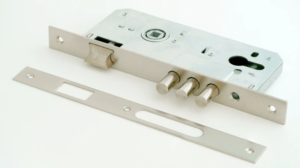
Deadbolts
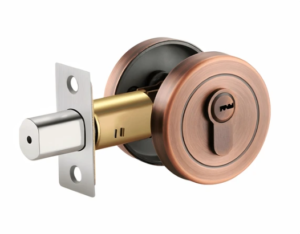
Deadbolts are considered more secure than standard spring locks as they can only be opened with a specialized key that rotates the lock cylinder. They come in several variations, including single cylinder, double cylinder, and jimmy proof deadbolts. The jimmy proof variant is particularly popular for double doors due to its design, which interlocks with the jamb bracket, making it extremely difficult to remove from the outside.
Knob Locks
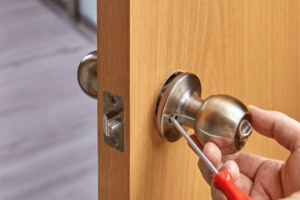
Knob locks are common in residential settings and feature knobs on both sides of the door. One side contains a locking mechanism while the other has a keyhole. They are often used for interior doors as well as some exterior doors, although they are generally less secure than deadbolts.
Barrel Bolts and Chain Locks
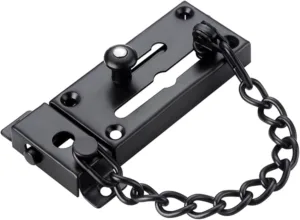
Barrel bolts are installed on the inside of the door to enhance security when occupants are home, featuring two pieces that work together to lock the door from the inside. Chain locks provide an additional layer of security by allowing the door to be opened slightly while still being secured, thus enabling a peek outside before fully opening the door.
Electronic Locks
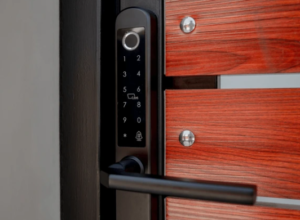
As technology has advanced, electronic locks have gained popularity for their con- venience and enhanced security features.
Keypad Locks
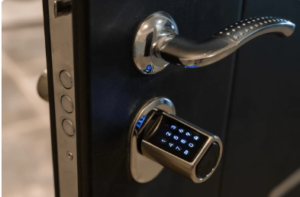
Keypad locks require a numerical code to unlock the door, allowing for easy access without physical keys. These locks can be easily updated to accommodate multiple users, making them ideal for homes and offices.
Biometric Fingerprint Locks
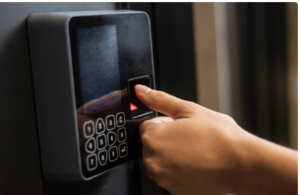
These locks provide a high level of security by requiring a unique fingerprint for access. This technology is becoming increasingly popular in both residential and commercial settings due to its difficulty to bypass and its user-specific nature.
Smart Card and RFID Locks
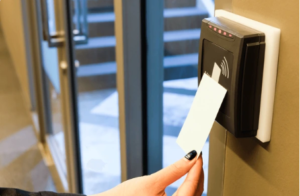
Smart card and RFID locks utilize technology to function, offering keyless entry and allowing users to unlock doors via smart cards or RFID tags. Many of these systems can be integrated with smart home technology for added convenience and control.
Specialty Locks
In addition to standard locks, there are specialty options tailored for specific needs. For instance, some locks may be designed for high-security environments or have features that cater to unique architectural requirements.
Considerations in Lock Selection
When choosing a lock type, various factors should be considered, including security needs, ease of use, and the specific application of the lock. Each type offers different benefits and levels of protection, making it essential for consumers to assess their individual security requirements before making a decision.
Industry Standards Organizations
Overview of Lock Standards
Lock standards are essential guidelines established by various organizations to ensure the quality, safety, and performance of locks across different applications. These standards not only promote reliability but also enhance user confidence in the products they choose for securing their properties. Compliance with these standards guarantees that locks meet specific criteria regarding durability, security, and safety.
National Standards
In the United States, the American National Standards Institute (ANSI) plays a pivotal role in developing national standards for locks. The ANSI/BHMA standards, developed in collaboration with the Builders Hardware Manufacturers Association (BHMA), encompass a wide range of products, including locks, door closers, and exit devices. These standards are critical for ensuring the integrity and functionality of builders’ hardware and are often referenced in building codes and project specifications.
BHMA has been formulating American National Standards since 1983, with over 42 standards currently in place that outline the performance and testing requirements for various locking mechanisms.
International Standards
International standards for locks are established by organizations that operate globally, such as the International Organization for Standardization (ISO). These standards provide a consistent framework for the design, construction, testing, and certification of locks across multiple countries, ensuring that products meet internationally recognized quality benchmarks.
Industry Standards
Industry standards are typically developed by trade organizations or industry associations to promote best practices and improve the overall quality of locks. While these standards may be voluntary, they serve as a valuable resource for manufacturers, installers, and users, addressing specific issues or applications such as high-security locks or those tailored for particular environments. The BHMA, for example, categorizes its standards into three performance grades, allowing consumers to make informed choices based on the rigorous testing a product has undergone.
Importance of Compliance
Understanding and adhering to these standards is crucial for manufacturers and users alike. By familiarizing themselves with relevant standards and selecting compliant products, consumers can ensure ongoing safety and security in their locking systems. Proper installation according to these guidelines further enhances the effectiveness of locks, mitigating potential risks associated with improper use.
Classification Systems
The classification of door locks and hardware in the United States is primarily governed by the American National Standards Institute (ANSI) and the Builders Hardware Manufacturers Association (BHMA). These organizations have established a comprehensive grading system to categorize products based on their performance and durability.
ANSI/BHMA Grading System
The ANSI/BHMA grading system categorizes door hardware into three distinct grades, each reflecting the product’s capability to withstand operational and security tests:
- Grade 1: This grade represents the highest level of security and durability, typically recommended for commercial settings with significant usage demands. Grade 1 locks are engineered to endure heavy impact and high cycle counts, making them ideal for high-security areas
- Grade 2: Offering a balance of performance and cost, Grade 2 locks are suited for lighter commercial and heavier residential applications. These locks provide substantial security while remaining budget-friendly, making them a common choice for office buildings, retail environments, and light industrial facilities. They are reliable for moderate traffic areas but are less robust than Grade 1 options.
- Grade 3: Designed for residential use, Grade 3 locks offer basic functionality and security. They are best suited for low-security applications, typically found in interior doors where high-security measures are not necessary.
Certification Process
Achieving certification under the ANSI/BHMA standards involves a rigorous process that includes independent testing and ongoing compliance evaluations.
Initial Testing: Independent laboratories conduct tests to ensure compliance with ANSI/BHMA standards.
Statement of Compliance: Manufacturers must submit documentation affirming that their products meet the established benchmarks.
Ongoing Compliance: Regular retesting and quality assurance checks are mandated to maintain certification status.
Implications for Specifiers and Manufacturers
The ANSI/BHMA classification system not only assists specifiers in selecting the appropriate hardware for various applications but also reinforces manufacturers’ commitment to quality assurance. By adhering to these standards, manufacturers can effectively position their products in the market, enhancing consumer trust and ensuring reliability in security.
This systematic approach fosters a culture of safety and quality within the architectural and building hardware industry.
Security Features
In the United States, the security of door locks is critical for both residential and commercial properties, necessitating robust and effective locking mechanisms. The evolving security landscape emphasizes the importance of high-quality security features in door locks to protect against a range of threats, including break-ins and unauthorized access.
High-Security Locks
High-security door locks are designed as the first line of defense, safeguarding not only physical assets but also sensitive data and intellectual property. These locks typically incorporate advanced technology, such as pick-resistant mechanisms, which make it exceedingly difficult for intruders to manipulate the lock. By employing complex internal components, these locks deter burglars and enhance the overall security of the property.
Smart Locks
The rise of smart technology has transformed traditional locking systems into more sophisticated security solutions. Smart locks feature innovative functionalities such as biometric access (fingerprint and facial recognition), remote control capabilities, and integration with broader smart security systems. These locks provide real-time monitoring and alerts, allowing property owners to manage access and receive notifications about unauthorized attempts. Studies indicate that businesses utilizing smart lock systems report fewer incidents of unauthorized access, benefiting from customizable security features tailored to their needs.
Layered Security Approach
A comprehensive security strategy emphasizes the importance of a layered security approach. This includes not only high-security locks but also the integration of surveillance cameras, alarm systems, and physical security personnel. By combining multiple security measures, businesses can create a robust defense against potential threats. The presence of security personnel adds an additional layer of assurance, particularly for businesses that are at higher risk due to the nature of their operations or the value of their assets.
Master Key Systems
For businesses with multiple access points, implementing a master key system can significantly enhance security. This system allows for customizable access control, enabling property owners to assign specific keys to employees while retaining overall control through a master key. The convenience of a master key reduces the number of keys in circulation, mitigating the risk of unauthorized duplication, and streamlining access management across the property. This approach not only enhances security for sensitive areas but also simplifies access for authorized personnel.
Compliance and Regulations
Compliance with various regulations and standards is critical for commercial door locks to ensure safety, accessibility, and security in buildings. Business owners must navigate a range of legal requirements that govern the use of locks in commercial spaces, including fire and emergency exit regulations, the Americans with Disabilities Act (ADA), and the Health Insurance Portability and Accountability Act (HIPAA).
Legal Obligations
The ADA mandates that door locks and entry systems be operable with one hand without requiring tight grasping or twisting, thus promoting accessibility for individuals with disabilities. Additionally, HIPAA requires secure areas for storing sensitive information, necessitating the implementation of locking mechanisms that effectively control and monitor access to these areas. Failure to comply with these regulations can result in fines and legal repercussions, highlighting the importance of adherence to compliance standards for business operations.
Ongoing Compliance and Certification
To maintain compliance, businesses should conduct regular checks and updates to their security systems. This includes testing and certification processes that verify locking hardware meets established standards. The ANSI/BHMA standards, for instance, are widely recognized in the building and construction industry and serve as prerequisites in building codes and project specifications. Products that fail to meet certification standards may lose their certification, emphasizing the need for ongoing quality assurance and compliance in the manufacturing process.
Building Codes and Egress Requirements
Various building codes further dictate the requirements for door locks and hardware. The International Building Code, International Fire Code, and the National Fire Protection Association 101 (Life Safety Code) incorporate hardware standards to ensure safety and accessibility in both commercial and residential buildings. Specifically, the Means of Egress code outlines the necessary exits in commercial buildings and establishes minimum dimensions for aisles and doorways to facilitate safe evacuation during emergencies. Compliance with these codes is essential for safeguarding the health, safety, and welfare of all building occupants.
Importance of Compliance
Implementing compliant locking systems not only enhances security and protects sensitive information but also builds trust with customers by demonstrating a com- mitment to safety and privacy. Furthermore, a strong adherence to compliance can enhance a business’s reputation within the community, indicating a proactive approach to safety and regulatory requirements. By understanding and priori- tizing compliance, business owners can ensure that their commercial properties meet all necessary legal standards while providing a secure environment for employees and customers alike.
Trends and Innovations
Market Growth and Drivers
The digital door lock market is projected to grow at a compound annual growth rate (CAGR) of 7.8% from 2025 to 2034, driven by rising infrastructural development and increasing accessibility to digital lock technologies. Significant trends contributing to this growth include the growing adoption of smart home technology, the launch of advanced electronic door locks, and the proliferation of 5G technology, which enhances connectivity and functionality.
Types and Features
Electronic door locks are available in various forms, including deadbolts, knobs, and levers, and utilize several authentication methods such as biometric recognition, PIN codes, and card keys. The integration of smart lock technology allows for remote access and management through smartphones, providing users with greater control and convenience. Features such as geofencing enable locks to automatically unlock when a user approaches and lock again upon departure, streamlining daily routines while enhancing security.
Security Challenges
Despite advancements, the market faces challenges, particularly regarding cybersecurity. In 2023, over 20% of digital lock users reported concerns about hacking and unauthorized access. This has led manufacturers to prioritize robust security protocols and regular software updates to mitigate risks associated with software vulnerabilities and data breaches, especially in commercial applications where multiple users interact with the systems.
Emerging Technologies
The growing demand for biometric authentication systems presents significant opportunities for innovation within the market. Additionally, advancements in ultra-wideband (UWB) technology are paving the way for locks that can integrate with smartphones and wearables, thereby enhancing user convenience and security measures.
Market Opportunities
Emerging markets, particularly in the Middle East, are investing in luxury residential developments that incorporate smart locks as standard features, reflecting a trend toward modernized security solutions in high-end real estate. Furthermore, government initiatives promoting smart city projects are creating a favorable environment for the adoption of digital door locks, particularly in developing economies.
Consumer Awareness and Adoption
However, high initial costs and limited awareness in rural areas continue to hinder the widespread adoption of digital door locks. A recent survey indicated that a significant portion of consumers has not upgraded their home security systems in recent years, highlighting the potential for growth as merchants encourage the adoption of modern, high-security products.
Consumer Considerations
When selecting a door lock, consumers should take into account several critical factors to ensure optimal security and functionality. The choice of a door lock not only impacts the safety of physical assets but also influences the overall aesthetic of a property.
Evaluating Security Needs
Risk Assessment
Understanding the specific security risks associated with a property is crucial. Factors such as location and crime rates can significantly impact the level of security needed. Businesses in high-crime areas, for example, may require more robust locking solutions compared to those situated in safer neighborhoods.
Lock Types and Features
Different types of locks offer varying levels of security and convenience. For instance, deadbolts are widely recognized for their strong security features, making them a popular choice for both residential and commercial applications.
Additionally, features such as durability and resistance to forced entry should be prioritized when making a selection.
Industry Standards and Ratings
BHMA and ANSI Ratings
Consumers should familiarize themselves with industry ratings such as the BHMA (Builders Hardware Manufacturers Association) and ANSI (American National Standards Institute) standards. While there is no direct comparison between BHMA and ANSI ratings, understanding the grading system can help buyers make informed decisions. For example, a BHMA “A” security rating may not directly correlate to an ANSI Grade 1, yet both serve as indicators of a lock’s reliability and security features.
Regular Upgrades and Maintenance
The security landscape is ever-evolving, and regularly reviewing and upgrading security measures is essential. This includes ensuring that door locks meet current standards and are periodically re-tested to confirm their effectiveness against emerging threats.
Aesthetic Considerations
While functionality is paramount, many consumers also prioritize the aesthetic appeal of door locks. Homeowners often seek locks that not only provide security but also enhance the overall look of their property. As smart security products become increasingly prevalent, it’s essential to balance modern design with traditional reliability when making purchasing decisions.
Share This Story, Choose Your Platform!

